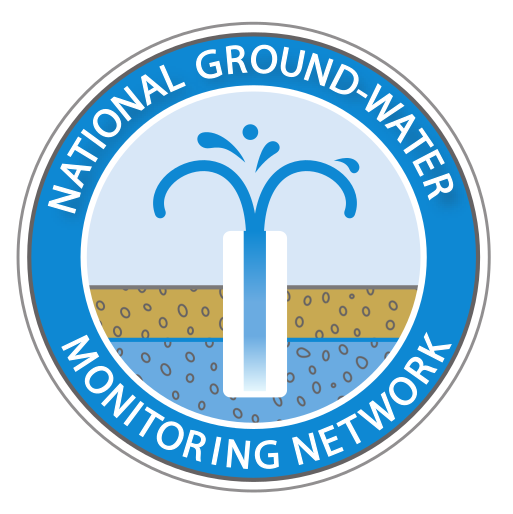Montana Bureau of Mines and Geology
Link to: MBMG Ground Water Information Center
NGWMN Contact:
John LaFave
(406) 496-4306
The Montana Bureau of Mines and Geology (MBMG) is a water-level and water-quality data provider to the National Groundwater Monitoring Network (NGWMN). The MBMG was one of the initial NGWMN pilot studies and was one of the first agencies to provide data to the NGWMN data portal. Approximately 1/4 of Montana's 1,000 groundwater monitoring sites are included in the NGWMN. Sites included in the water-level network have data collected at least quarterly. Sites in the water-quality network are sampled approximately every 5 years. MBMG has been a part of the Network since 2015.
MBMG provides water-level and water-quality data from the Alluvial aquifers, Sand and gravel aquifers (glacial regions), Northern Rocky Mountains Intermontane Basins aquifer system, Lower Tertiary aquifer, Upper Cretaceous aquifer, Lower Cretaceous aquifer, and Paleozoic aquifers.
NGWMN Products:
NGWMN Projects:
Initial project to become a NGWMN data provider.
2016 Round 1: 9/1/2016 to 7/20/2019
Project to support maintenance of database connections to NGWMN portal.
2016 Round 2: 9/1/2016 to 8/31/2019
Project to fill site-information gaps and perform well maintenance work. Survey grade GPS locations and land-surface altitudes determined at 50 sites. Well maintenance work to install steel protective casings at 15 wells with exposed PVS casing.
Project to do well rehabilitation and repair on three wells in Northwest Montana.
2019: 12/30/2019 to 12/29/2021
Project is to provide persistent data services for 2 years. The purpose is to ensure that NGWMN data is up to date and available.
Project is to drill two wells to replace an existing shallow NGWMN site with a well nest in the Northern Rocky Mountains Intermontane Basin aquifer near West Yellowstone.
Project is to fill various data gaps at six wells, drill 2 new wells, and replace continuous monitoring equipment at 20 existing wells.
2023: 7/1/2023 to 6/30/2025
Project is to provide persistent data services for 2 years, drill 3 new wells, and to purchase and install continuous monitoring equipment at 15 existing wells.
NGWMN Presentations:
December 2016 presentation to SOGW
Site Selection and Classification
Site Selection
The approximately 1,000 wells in the Montana network were reviewed to identify those that have a water-level record of at least 5 years and are completed in a principal aquifer. Then the water-level record and well settings were then evaluated to make a sub-network determination. Finally, the monitoring frequency was used to classify the sites as either trend or surveillance. This review and reclassification identified 227 wells for inclusion in the NGWMN. The NGWMNFramework Document and NGWMN Tip Sheets were used to guide the selection process.
A total of 856 Principal Aquifer wells had five or more years of water-level data and a monitoring frequency of at least quarterly. The NGWMN wells were selected from this set of wells. Final NGWMN candidates were selected from this group after considering the aquifer extent, groundwater development (indicated by the number of production wells), the groundwater flow system, and the monitoring well density.
Site Classification
The MBMG evaluated each well's hydrograph in conjunction with local hydrogeologic and land-use conditions to assign the candidate to the Background, Suspected Changes, or Documented Changes subnetworks. The hydrographs from most Montana network wells showed little or no anthropogenic effect and were assigned to the Background subnetwork. Hydrographs that showed known anthropogenic effects (assigned to the Documented Changes subnetwork) contained signals documenting:
- Seasonal irrigation recharge -mostly in the irrigated intermontane basins and eastern alluvial aquifers.
- Seasonal irrigation withdrawals - mostly in the irrigated intermontane basins and buried sand and gravel glacial aquifers.
- Long-term depletion - locally in the Fox Hills-Hell Creek aquifer of the upper Cretaceous aquifer system in eastern Montana.
The tables below summarize the initial site selection and classification used for each Principal aquifer. More details on the selection and classification for each aquifer is in the [final project report](Montana NGWMN rept 11_15_16 G15AC00254.pdf).
| Principal Aquifer | Trend wells | Background wells | Suspected Changes wells | Documented Changes wells |
|---|---|---|---|---|
| Northern Rocky Mountains Intermontane Basins aquifer systems | 109 | 83 | 0 | 26 |
| Alluvial aquifers | 15 | 15 | 0 | 0 |
| Sand and gravel aquifers (glacial regions) | 9 | 8 | 0 | 1 |
| Lower Tertiary aquifers | 37 | 31 | 5 | 1 |
| Upper Cretaceous aquifers | 46 | 44 | 0 | 2 |
| Lower Cretaceous aquifers | 7 | 7 | 0 | 0 |
| Paleozoic aquifers | 4 | 4 | 0 | 0 |
| Principal Aquifer | Number of Surveillance wells | Number of Background wells |
|---|---|---|
| Water-Quality sites in the NGWMN | ||
| Northern Rocky Mountains Intermontane Basins aquifer systems | 28 | 28 |
| Alluvial aquifers | 1 | 1 |
| Sand and gravel aquifers (glacial regions) | 4 | 4 |
| Lower Tertiary aquifers | 12 | 12 |
| Upper Cretaceous aquifers | 8 | 8 |
| Lower Cretaceous aquifers | 4 | 4 |
| Paleozoic aquifers | 1 | 1 |
Data Collection Techniques
The MBMG collects their groundwater data according to standard protocols available here.
Data Management
The MBMG has an agency-wide comprehensive data management system that houses all of its' groundwater and borehole lithologic information. The database occupies a central position within MBMG accepting new data and data corrections from agency staff, and providing real-time access to agency data through public websites.
All data is stored in the Montana Ground Water Information Center (GWIC) database at the Montana Bureau of Mines and Geology.
Other Agency Information
Web sites of Interest
Montana Ground Water Assessment Program (GWAP)
Montana Ground Water Investigation Program
MBMG use of monitoring data
Evaluate impacts of development on groundwater resources
Drought effects on groundwater
Transboundary aquifer issues

